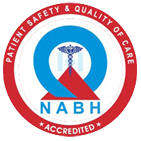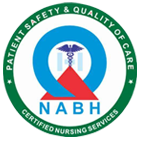FOLLOW THE MISSION HOSPITAL




Rosacea is a common disorder that most usually affects facial skin. It causes redness on the nose, chin, cheeks, and forehead. Over time, the redness may become more intense, taking on a ruddy appearance. Small blood vessels may become visible.
In some cases, rosacea can appear on the chest, ears, neck, or scalp. If rosacea is not treated, red solid bumps and pus-filled pimples can develop. The disorder can cause the nose to take on a bulbous, swollen appearance called rhinophyma. Rosacea can affect the eyes, causing them to feel irritated and to appear bloodshot or watery. Styes may occur. This is called ocular rosacea.
Rosacea affects an estimated 14 million Americans. Most of them do not know they have this condition.
The cause of rosacea is unknown; however, different theories exist regarding the cause. One theory is that rosacea might be a component of a more generalized disorder of the blood vessels. Other theories suggest that the condition is caused by microscopic skin mites, fungus, psychological factors, or a malfunction of the connective tissue under the skin. Although no one knows for sure what causes rosacea, some circumstances and conditions can trigger it.
Your doctor will conduct a thorough exam of your signs and symptoms, and will take a medical history. During your exam, you should tell your doctor about any problems you are having with your face (redness, bumps or pimples, burning, itching, etc.). There is no specific test to diagnose rosacea.
People who have fair skin and who tend to blush easily might be at a higher risk for the disorder. Rosacea appears more often among women, but men tend to have the more severe symptoms. A possible reason for this could be that men delay medical treatment until rosacea becomes advanced.
Rosacea's appearance can vary greatly from one individual to another. Most of the time, not all of the potential signs and symptoms appear. Rosacea always includes at least one of the primary signs listed below. Various secondary signs and symptoms might also develop.
While there is no cure for rosacea and the cause is unknown, medical therapy is available to control or reverse its signs and symptoms. If you suspect that you might have rosacea, meet with your doctor.
Treatment methods vary because the signs and symptoms of rosacea vary from person to person. The following are some treatments used for rosacea:
As the cause of rosacea is not known, the condition cannot be prevented. However, rosacea sufferers can improve their chances of maintaining remission by identifying and avoiding lifestyle and environmental factors that aggravate individual conditions or trigger rosacea flare-ups. Some triggers include:

A Unit Of Durgapur Medical Centre Pvt. Ltd.